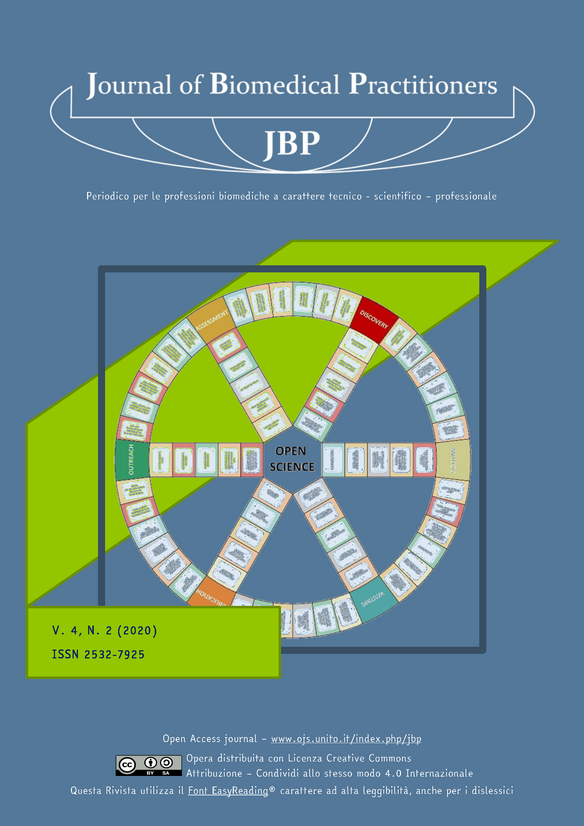Guida pratica alla stesura di una metanalisi clinica
Contenuto principale dell'articolo
Abstract
La metanalisi (o meta-analisi) è la tecnica che viene utilizzata in una revisione sistematica e consiste in una serie di metodi matematico-statistici che permettono di aggregare e combinare dati e risultati di diversi studi con ridotta numerosità campionaria o con risultati discordanti, condotti su di uno stesso argomento.
Essa pertanto può consentire di giungere a conclusioni più rilevanti, affidabili e con elevata potenza statistica.
È importante saper scegliere in modo corretto gli studi da considerare, calcolarne l’eterogeneità, conoscere (e possibilmente ridurre al minimo) i bias e saper mostrare e commentare adeguatamente i risultati.
Questo articolo vuole racchiudere tutti i riferimenti e i passaggi necessari per scrivere una adeguata (e quindi facilmente pubblicabile) metanalisi.
Downloads
Dettagli dell'articolo
Gli autori mantengono i diritti sulla loro opera e cedono alla rivista il diritto di prima pubblicazione dell'opera, contemporaneamente licenziata sotto una Licenza Creative Commons - Attribuzione che permette ad altri di condividere l'opera indicando la paternità intellettuale e la prima pubblicazione su questa rivista.
Riferimenti bibliografici
[2] M. Paul and L. Leibovici, “Systematic review or meta-analysis? Their place in the evidence hierar-chy,” Clinical Microbiology and Infection: The Official Publication of the European Society of Clinical Microbiology and Infectious Diseases, vol. 20, no. 2, pp. 97–100, Feb. 2014, doi: 10.1111/1469-0691.12489.
[3] T. Muka et al., “A 24-step guide on how to design, conduct, and successfully publish a systematic review and meta-analysis in medical research,” European Journal of Epidemiology, vol. 35, no. 1, pp. 49–60, Jan. 2020, doi: 10.1007/s10654-019-00576-5.
[4] D. Moher, A. Liberati, J. Tetzlaff, D. G. Altman, and T. P. Group, “Preferred Reporting Items for Systematic Reviews and Meta-Analyses: The PRISMA Statement,” PLOS Medicine, vol. 6, no. 7, p. e1000097, Jul. 2009, doi: 10.1371/journal.pmed.1000097.
[5] D. Moher, D. J. Cook, S. Eastwood, I. Olkin, D. Rennie, and D. F. Stroup, “Improving the quality of reports of meta-analyses of randomised controlled trials: the QUOROM statement. Quality of Report-ing of Meta-analyses,” Lancet, vol. 354, no. 9193, pp. 1896–1900, Nov. 1999, doi: 10.1016/s0140-6736(99)04149-5.
[6] G. Vithoulkas, “Serious mistakes in meta-analysis of homeopathic research,” Journal of Medicine and Life, vol. 10, no. 1, pp. 47–49, Mar. 2017.
[7] “Home - PMC - NCBI.” https://www-ncbi-nlm-nih-gov.bibliopass.unito.it/pmc/ (accessed Oct. 14, 2020).
[8] “Scopus - Document search.” https://www.scopus.com/search/form.uri?display=basic (accessed Oct. 14, 2020).
[9] “Web of Science [v.5.35] - Web of Science Core Collection Advanced Search.” https://apps.webofknowledge.com/WOS_AdvancedSearch_input.do?product=WOS&search_mode=AdvancedSearch&SID=C2zwWvvNmR4n67eQWsI&locale=en_US (accessed Oct. 14, 2020).
[10] E. D. Ecker and A. C. Skelly, “Conducting a winning literature search,” Evid Based Spine Care J, vol. 1, no. 1, pp. 9–14, May 2010, doi: 10.1055/s-0028-1100887.
[11] T. Pigott, Advances in Meta-Analysis. New York: Springer-Verlag, 2012.
[12] “Meta Power Calculator.” https://jtiebel.shinyapps.io/MetaPowerCalculator/ (accessed Oct. 14, 2020).
[13] “R: The R Project for Statistical Computing.” https://www.r-project.org/ (accessed Oct. 22, 2020).
[14] S. Balduzzi, G. Rücker, and G. Schwarzer, “How to perform a meta-analysis with R: a practical tuto-rial,” Evidence-Based Mental Health, vol. 22, no. 4, pp. 153–160, Nov. 2019, doi: 10.1136/ebmental-2019-300117.
[15] S. R. Shim and S.-J. Kim, “Intervention meta-analysis: application and practice using R software,” Epidemiol Health, vol. 41, Mar. 2019, doi: 10.4178/epih.e2019008.
[16] J. Higgins, T. Li, and J. Deeks, “Chapter 6: Choosing effect measures and computing estimates of ef-fect.,” in Cochrane Handbook for Systematic Reviews of Interventions, 2020.
[17] M. Bobbio, Trial clinici. Come interpretare e applicare i risultati di una ricerca scientifica. Centro Scientifico Editore, 1997.
[18] A. Ahlbom and S. Norell, Introduzione all’epidemiologia moderna. Il Pensiero Scientifico, 1993.
[19] Cochrane Injuries Group Albumin Reviewers, “Human albumin administration in critically ill patients: systematic review of randomised controlled trials,” BMJ, vol. 317, no. 7153, pp. 235–240, Jul. 1998, doi: 10.1136/bmj.317.7153.235.

